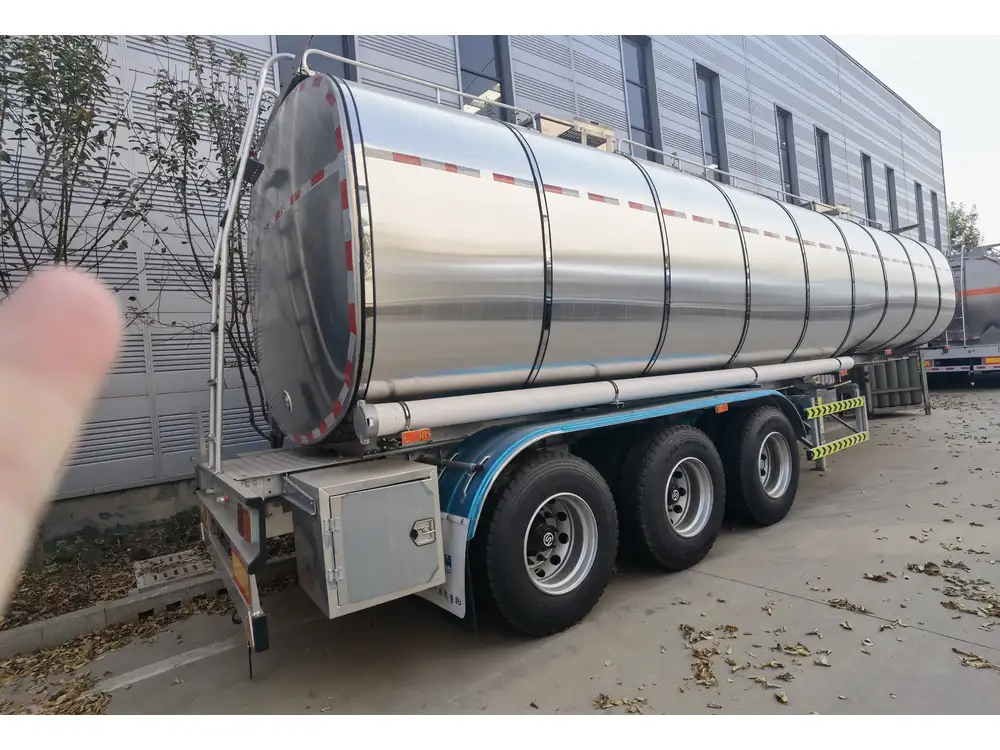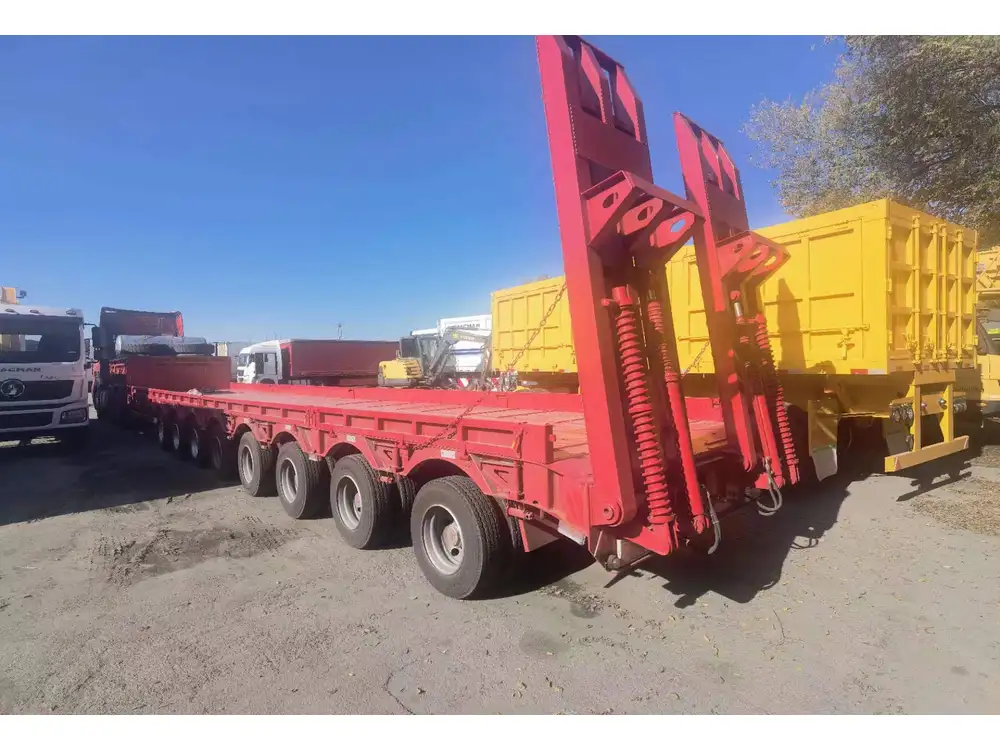Owning and maintaining a fleet of semi-trailers is not just about the logistics of transport but also about aesthetics and branding. One significant aspect that often gets overlooked is the cost of painting a semi-trailer. This article delves into the intricacies of the costs involved, the factors influencing these costs, and essential insights that fleet operators should consider before embarking on this investment.
Understand the Cost Factors
The cost to paint a semi-trailer can vary greatly, influenced by multiple factors. When planning your budget, it’s crucial to consider the following elements:
| Cost Factors | Description |
|---|---|
| Type of Paint | High-quality paints (e.g., urethanes, enamels, or acrylics) typically range from $30 to $80 per gallon, impacting overall costs significantly. |
| Preparation Work | Proper surface preparation is key and can take significant time and labor, affecting total expenses. |
| Labor Costs | Labor rates differ by region and shop but average between $50 and $100 per hour. The complexity of the job (including the size and condition of the trailer) plays a critical role. |
| Trailer Size | The size and dimensions of the semi-trailer directly influence the amount of material needed and the labor involved. |
| Design Complexity | Custom graphics and intricate designs can significantly increase costs. Simpler designs tend to be more cost-effective. |
| Finish Type | Matte, glossy, or metallic finishes can come with varying price points, influencing the total cost. |
| Location of Service | Different geographical areas have different pricing structures, which can lead to variances in total costs. |
Breakdown of Painting Costs

1. Preparation Costs
Before any paint touches the surface, preparation is critical. Cleanliness, repairs, and surface smoothing add up. Here’s an overview of what to expect:
- Cleaning: $100 – $300, depending on the initial state of the trailer.
- Repairs: Any necessary rust removal or bodywork might add $200 – $800.
- Sanding/Priming: Preparation for painting could cost between $150 – $400.
Overall, expect to allocate at least 10% to 20% of your total painting budget for preparation work.
2. Material Costs
The core materials involved in the painting process include paint itself, primers, and any additional materials like masking tape, paper, and tools. Costs can break down as follows:
| Material | Estimated Cost |
|---|---|
| Base Coat Paint | $30 to $80 per gallon; a semi-trailer might need 3-5 gallons, leading to $90 to $400. |
| Primer Paint | $20 to $50 per gallon; may require 2-3 gallons costing $40 to $150. |
| Clear Coat | Ranges approximately from $50 to $100 per gallon; for a full trailer, anticipate $100 to $300. |
| Other Materials | Miscellaneous items may total $50 to $200. |
3. Labor Costs
Labor is often the most significant expense. A professional paint job may take anywhere from 8 to 20 hours, depending on the factors noted before.
- Basic Paint Job: 8–10 hours = $400 – $1,000
- Custom Design: May increase to 15–20 hours = $750 – $2,000
Hiring skilled workers or reputable shops typically costs more but can lead to a higher quality finish.

4. Total Estimated Costs
A general overview of potential costs might look like this:
| Job Type | Estimate (Low) | Estimate (High) |
|---|---|---|
| Basic Paint Job | $1,000 | $2,000 |
| Full Custom Design | $2,000 | $5,000 |
| Complete Refurbishment | $3,500 | $7,000 |
5. Hidden Costs
Beyond the explicit costs associated with paint, operators should also consider potential hidden costs:
- Downtime: Painting can take vehicles out of service for up to a week, affecting productivity.
- Potential Repainting: If the job does not meet expectations, you may face additional costs for corrections.
ROI: Is It Worth It?
Investing in a quality paint job can enhance your fleet’s image significantly, but how do you quantify this investment? Here are the potential returns on investment (ROI) when you decide to paint your semi-trailer:
- Brand Visibility: A well-painted trailer boosts your brand’s visibility, especially on highways. High-quality designs can provide a compelling return through brand recognition and customer loyalty.
- Resale Value: Fresh paint can increase the resale value of your semi-trailer. A newer-looking trailer appeals to potential buyers.
- Preventative Maintenance: Regularly maintaining your paint job helps prevent corrosion and extends the lifespan of your vehicles, saving you money in repairs down the line.

Selecting the Right Painting Service
1. Choosing a Professional Painter
To ensure you get the best results within your budget, consider the following:
- Experience and Reputation: Look for a service provider with a proven track record in commercial vehicle painting.
- Portfolio: A strong portfolio showcasing previous work can give you insights into the quality of their service.
- Reviews: Check testimonials and reviews on platforms like Google, Yelp, and industry-specific forums.
2. In-House vs. Outsourcing
- In-House Painting: You can save costs by attempting painting internally, especially if you have a skilled team. However, ensure your staff is properly trained to avoid costly mistakes.
- Professional Services: These services are often quicker and more reliable, plus they come with quality guarantees.

Common Questions and Considerations
1. How Often Should I Paint My Semi-Trailer?
A general rule of thumb is to repaint every 3-5 years, depending on exposure to elements, wear, and tear, or damage.
2. Can I Paint Over Existing Paint?
Yes, but surface preparation is crucial. As long as the current coat is in good condition, thorough cleaning and sanding can lead to a successful repaint.

3. What Types of Paint Are Best?
High-quality urethane and acrylic paints provide durability and a professional finish. They resist fading, scratching, and peeling when appropriately applied.
4. Can I Customize My Design?
Absolutely! Engaging with a designer to create a unique truck wrap or paint job can enhance your branding and make your fleet stand out.
Conclusion
Understanding the costs and factors associated with painting a semi-trailer can empower fleet operators to make informed decisions. By analyzing the detailed components of painting, including preparation, materials, labor, and potential ROI, companies can budget effectively and enhance their branding potential. Whether opting for a simple color refresh or a full custom design, investing in a professional paint job can yield significant benefits for your fleet in terms of visibility, aesthetics, and longevity.
Remember that while the upfront costs may seem substantial, the long-term advantages in terms of fleet appearance and brand recognition can far outweigh the initial investment. By following the guidelines outlined and engaging with skilled professionals in the industry, you can ensure that your semi-trailer not only looks great but also represents your brand effectively on the road.



